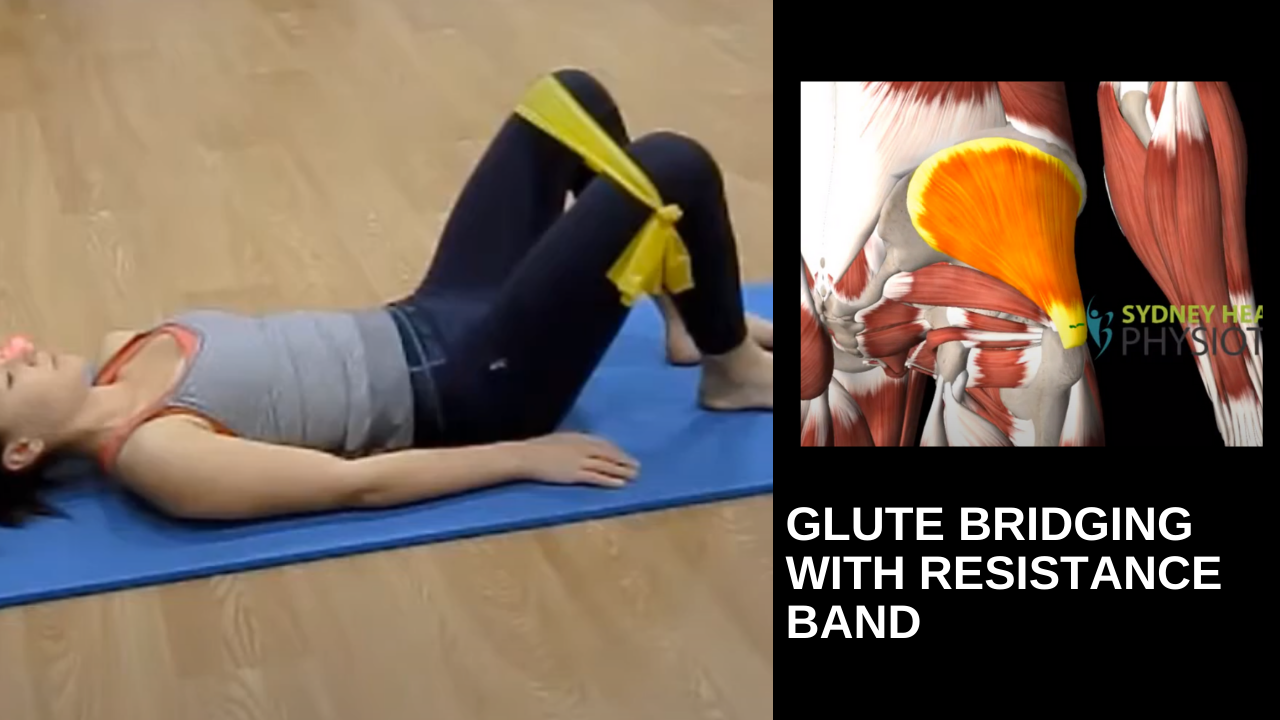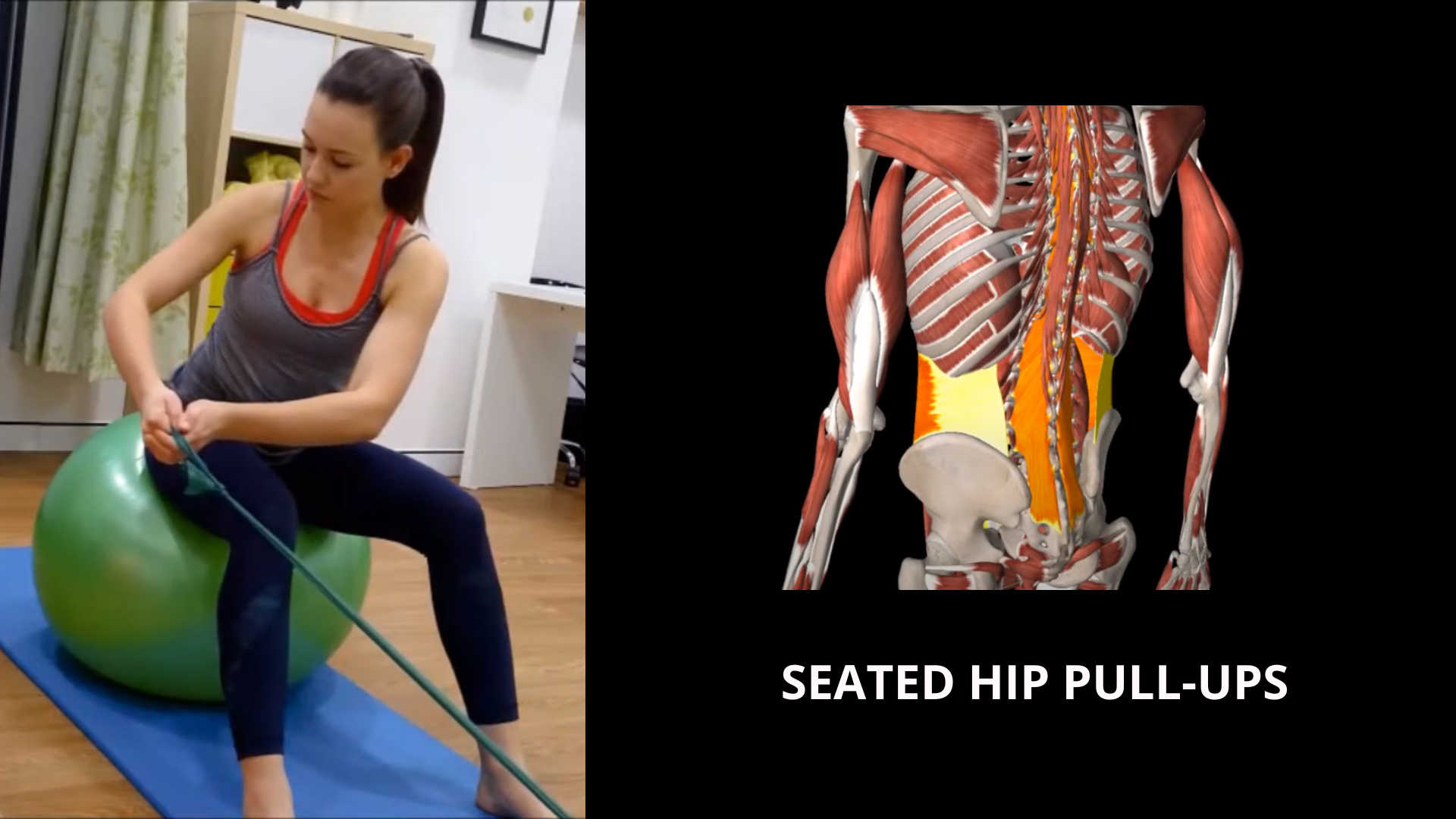Core activation
This supine core exercise targets deep abdominal muscles to support and protect the lower back. Ideal for anyone with back pain, desk workers, and individuals aiming to enhance core stability, it strengthens the core, reduces strain, and promotes better posture and back health.
Sidelying hip clam shell
The sidelying clamshell exercise strengthens the hip gluteal muscles, enhancing balance and stability. Perfect for individuals recovering from hip injuries, athletes, and those aiming to improve lower body strength, this exercise supports hip alignment, aids in injury prevention, and boosts functional movement.
Glute bridging with resistance band
Supine glute bridges with a band around the legs activate and strengthen the hip glutes, essential for back pain prevention and improved stability. Ideal for those with lower back discomfort, athletes, and individuals seeking core and hip support, this exercise promotes strong glutes to protect the lower back and enhance posture.
Bridging on ball
The glute bridge on a stability ball engages and strengthens the glutes and core, promoting balance and back support. Ideal for individuals aiming to improve hip stability, reduce lower back strain, and enhance overall core strength, this exercise builds functional stability and boosts glute activation.
Seated core and hip hold
Sitting on a stability ball for hip flexor activation engages the core and strengthens pelvic floor endurance, supporting posture and stability. Ideal for individuals seeking improved balance, core control, and lower body strength, this exercise enhances core endurance and promotes pelvic alignment.
Running man with trunk rotation
The Running Man with Trunk Rotation exercise activates and strengthens the side glute muscles, improving hip stability and core control. Perfect for runners, athletes, and individuals looking to enhance lateral hip strength, this dynamic movement promotes balance, coordination, and injury prevention in the lower body.
Ball hamstring bridge and roll
The hamstring bridge on a gym ball strengthens the hamstrings and glutes, crucial for stability and injury prevention in soccer players. This exercise is ideal for rehabbing and conditioning, promoting hamstring resilience, balance, and power essential for peak performance on the field.
Seated hip pull-ups
The seated-on-ball pull-ups against a resistance band exercise targets back and hip strength, making it effective for rehabilitation. Ideal for improving stability and control, this movement supports back alignment, strengthens hip muscles, and enhances core engagement for a balanced recovery.
Lunge forward trunk turn
Lunges with trunk rotation while holding a ball enhance knee and back coordination, promoting stability and control. Ideal for building lower body strength and core engagement, this exercise supports knee alignment, improves balance, and strengthens rotational movement for a well-rounded functional workout.
Hip soreness in hikers and runners: bursitis and gluteal tendinopathy
Hip pain in hikers & runners
The benefit of being strong as you age
Muscle importance for seniors. Bone density for elderly people. How physiotherapist and exercise physiologist can help.
Barefoot strengthening helps you to conquer the distance
Your foot and ankle can be strengthened with safe barefooted activities. Provided that the environment is right, the intrinsic muscles underneath your feet can work very hard for you and subsequently serve to support your foot arch. This has the benefit of injury prevention.
Meniscus injury may not require surgery
Certain exercises can support knee meniscus health by strengthening surrounding muscles, improving joint stability, and enhancing mobility. Targeted movements for the quadriceps, hamstrings, and hip muscles reduce stress on the meniscus, promoting better knee alignment and resilience. These exercises aid in pain management, prevent further injury, and support long-term knee function.














